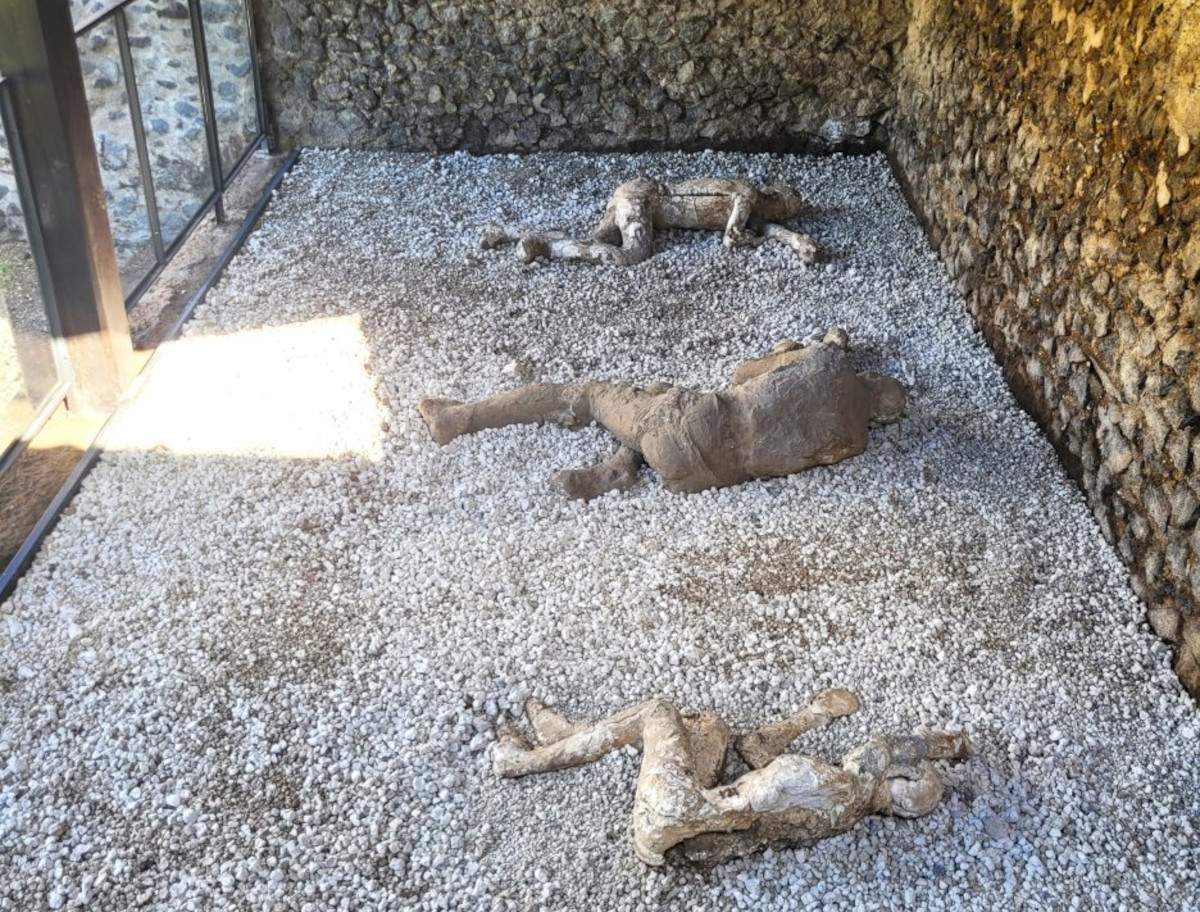The Archaeological Park of Pompeii offers, upon completion of maintenance and enhancement works, a new tour route that can be reached from the entrance of Piazza Anfiteatro by crossing the stretch of green walkway bordered by the ancient tombs of the necropolis of Porta Nocera: this is the exhibition area of some casts of victims of the eruption, found near the ancient Porta di Nocera. The area of Porta Nocera, with its necropolis, lies outside the walled circuit, southwest of the ancient city of Pompeii. The city gate opened in the direction of the ancient city of Nuceria (where the present municipalities of Nocera Inferiore and Nocera Superiore stand today). The entire area was brought to light as part of the excavations conducted in May 1952, by the then director of excavations Amedeo Maiuri as part of a larger program aimed at ridding the entire city wall of much of the topsoil that still covered it. In the fall of 1956, during the arrangement of the excavation fronts, in the area between Grave Street and the city walls, a group of four victims and the remains of a structure for muliones (muleteers) were found in the northwestern sector. As was already standard practice at the time, casts were made of these victims, according to the technique developed by archaeologist Giuseppe Fiorelli in the 19th century. The method, which is still used today, consists of pouring liquid plaster into the cavities found in the hardened ash bank, where archaeologists detect voids caused by the decomposition of organic soft parts. Once the plaster dries, the volume, shape and position of the object or body buried there are restored like a mold. And now the group of casts, upon completion of maintenance and restoration operations, are once again visible thanks to the upgrades and enhancements of the visitor’s route that allows visitors to approach as far as the exhibition area.
Of the four casts of the victims, only one lies in the original position of discovery. It is an adult man, about 1.80 meters tall in a prone position with his legs spread apart, covered on the back by a tunic. The cast was left in its original position directly on the lapilli. Two other victims were found a short distance away, between Porta Nocera and Tower II of the fortification: a teenager lying on his left side, legs bent forward with traces of a tunic on his back and abdomen and the soles of his sandals, and an adult lying on his right side with arms and legs bent, traces of the tunic and the sole of his left sandal. The last cast of this group was a boy between the ages of 7 and 19, initially interpreted by Maiuri as an old man, lying on his right side, retaining the imprint of a thin fabric on his chin, while on his feet he wore sandals with laces. Traces in the cast of a stick, a wooden bowl and a saddlebag, legible in a bulge on the victim’s left side, suggested that he was a beggar.
The maintenance and care interventions on the group of casts from Porta Nocera were aimed at making the exhibition area accessible to the public for a new enhancement of one of the historical displays made by Maiuri.
The activities involved in particular the creation of a safe access to the site, a rearrangement of the exhibition space with the insertion of new iron balustrades and the lightening of the existing protective panels by eliminating the gratings that constituted a visual limitation of the works, of the panels was only the metal frame was left adapted to the housing of new, ultra-clear and security glazed elements for a better perception of the whole and the details of the bodies, up to the maintenance of the existing roofs.
Particular attention was devoted to the plaster casts, which were severely compromised by the peculiar location of exposure; direct contact with the layer of bedding soil, primary in one case and secondary in the others, had caused widespread deterioration phenomena attributable to rising damp. A conservative intervention was therefore carried out aimed at insulating the artifact, avoiding its direct contact with the underlying soil through a complex operation of inserting an interposed aluminum honeycomb insulation panel between the artifact and its bedding layer. Again, maintenance is configured as a due act of constant care for the resolution of inherent conservation issues of an archaeological context.
 |
| Pompeii, a new tour route leads to casts of victims of the 79 AD eruption. |
Warning: the translation into English of the original Italian article was created using automatic tools. We undertake to review all articles, but we do not guarantee the total absence of inaccuracies in the translation due to the program. You can find the original by clicking on the ITA button. If you find any mistake,please contact us.